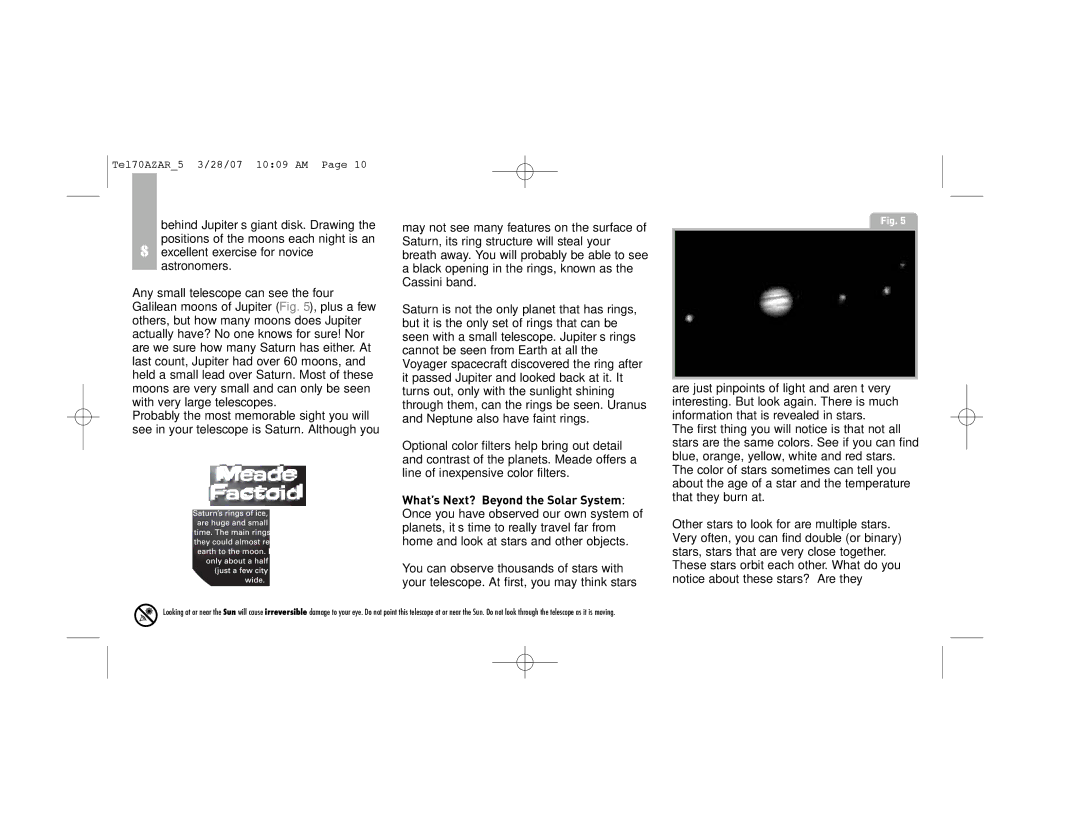
Tel70AZAR_5 3/28/07 10:09 AM Page 10
behind Jupiter’s giant disk. Drawing the positions of the moons each night is an
8excellent exercise for novice astronomers.
Any small telescope can see the four Galilean moons of Jupiter (Fig. 5), plus a few others, but how many moons does Jupiter actually have? No one knows for sure! Nor are we sure how many Saturn has either. At last count, Jupiter had over 60 moons, and held a small lead over Saturn. Most of these moons are very small and can only be seen with very large telescopes.
Probably the most memorable sight you will see in your telescope is Saturn. Although you
may not see many features on the surface of Saturn, its ring structure will steal your breath away. You will probably be able to see a black opening in the rings, known as the Cassini band.
Saturn is not the only planet that has rings, but it is the only set of rings that can be seen with a small telescope. Jupiter’s rings cannot be seen from Earth at
Optional color filters help bring out detail and contrast of the planets. Meade offers a line of inexpensive color filters.
What’s Next? Beyond the Solar System: Once you have observed our own system of planets, it’s time to really travel far from home and look at stars and other objects.
You can observe thousands of stars with your telescope. At first, you may think stars
Fig. 5
are just pinpoints of light and aren’t very interesting. But look again. There is much information that is revealed in stars.
The first thing you will notice is that not all stars are the same colors. See if you can find blue, orange, yellow, white and red stars. The color of stars sometimes can tell you about the age of a star and the temperature that they burn at.
Other stars to look for are multiple stars. Very often, you can find double (or binary) stars, stars that are very close together. These stars orbit each other. What do you notice about these stars? Are they
Looking at or near the Sun will cause irreversible damage to your eye. Do not point this telescope at or near the Sun. Do not look through the telescope as it is moving.
